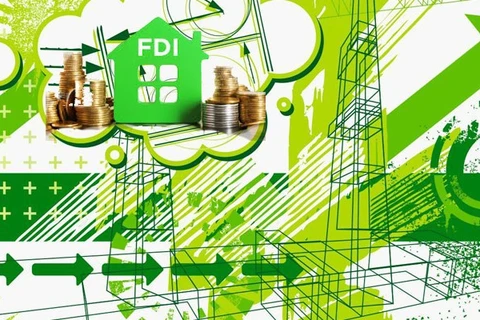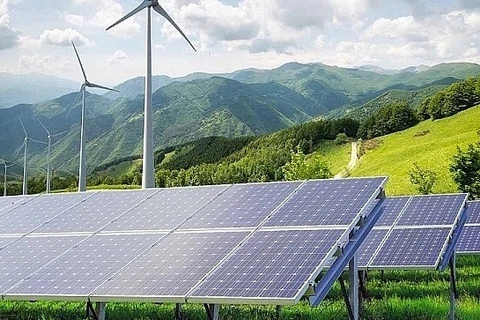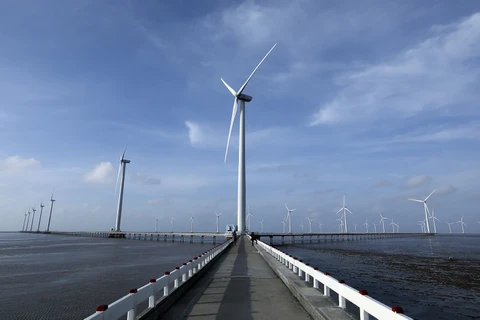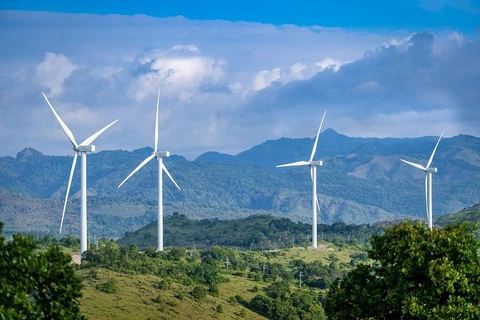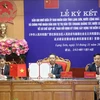 Environmentally friendly projects near the Swan Lake Park in Ecopark urban area in Hung Yen province. Vietnam is in need of huge supportive resources to adapt to climate change as well as realise the country's sustainable development goals. (Photo: tinnhanhchungkhoan.vn)
Environmentally friendly projects near the Swan Lake Park in Ecopark urban area in Hung Yen province. Vietnam is in need of huge supportive resources to adapt to climate change as well as realise the country's sustainable development goals. (Photo: tinnhanhchungkhoan.vn) Green credits and green bonds have widely flourished in developed countries. A report by CBI (Climate Bonds Initiative) showed that the total amount of green bonds issued globally reached 290 billion USD in 2021. The value in 2022 is estimated to reach 450 billion USD and can hit the trillion-dollar mark by 2023.
Vietnam is in need of huge supportive resources to adapt to climate change as well as realise the country's sustainable development goals. After the end of the COP26 Conference in Glasgow, the Prime Minister issued the National Action Plan on Green Growth for the 2021 - 2030 period, the national strategy on climate change to 2050, and at the same time, introduced an overall roadmap to realise the committed climate goals by creating a legal basis, promoting and supporting the business community, sectors and localities with a shared responsibility to reduce net emissions.
According to Pham Thi Thanh Tung, Deputy Director of the Credit Department of Economic Sectors, State Bank of Vietnam, in the 2017-2021 period, Vietnam’s outstanding green credit growth averaged 25% per year. As of June 30, 2022, outstanding loans for green projects reached more than 474 trillion VND, accounting for 4.1% of the total outstanding loans of the whole economy. This number has increased by 7.08% compared to 2021, focusing mainly on renewable energy, clean energy (47%) and green agriculture (32%).
However, according to her, there are still some limitations in green credit development. For example, there is still no regulation on criteria and list of green projects to serve as a basis for credit institutions to determine green credit for the subsequent period.
The granting of green credit also faces difficulties in monitoring and managing risks due to the lack of criteria and standards for tools to measure environmental impacts. In addition, investing in the green fields, especially in the fields of renewable energy and green buildings, often requires a long payback period and large investments, while the loan capital of credit institutions is often short-term capital. This makes it difficult for credit institutions to balance capital.
Nguyen Quang Thuan, General Director of FiinRatings said that the issuance of green bonds is now a big trend in the global capital market, estimated to have doubled in the past three years. Currently, a number of Vietnamese enterprises have started participating in international green bond programmes.
Thuan said that Vietnam’s economic growth target is very ambitious, so the demand for capital in many industries and businesses is very large. The process of green transformation is an opportunity for businesses to access different sources of capital, for example, through bank credit, bonds and domestic and foreign financial institutions, and especially foreign capital.
Currently, the scale of global sustainable bonds, including green bonds, totals more than 3 trillion USD. According to the International Climate Credit Organisation's targets, by 2025 the annual issuance value will reach about 5 trillion VND.
Thuan hopes that Vietnamese businesses can take advantage of about 1% of this, or about 50 billion USD, along with the Government having support mechanisms in terms of interest rates, taxes and fees, to participate and realise their commitment to reduce emissions to zero.
Tung said that this period is also an opportunity for businesses. Enterprises should orient their production and business activities according to the sustainable development model, and invest in green economic sectors in the transition of the economy./.
VNA
